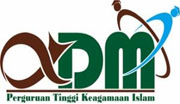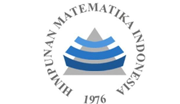Integrating Self-Organizing Maps and K-Means in a Multidimensional Approach to Enhance Private University Market Segmentation
Abstract
Keywords
Full Text:
PDFReferences
H. Khusnuliawati and D. R. Putri, “Hybrid clustering based on multi-criteria segmentation for higher education marketing,” TELKOMNIKA (Telecommunication Comput. Electron. Control., vol. 19, no. 5, pp. 1498–1506, 2021.
B. L. Ortiz, “Data Preprocessing Techniques for Artificial Learning (AI)/Machine Learning (ML)-Readiness: Systematic Review of Wearable Sensor Data in Cancer Care.,” JMIR Mhealth Uhealth, 2024.
Agnes Yonathan, “Indonesia Jadi Negara dengan Universitas Terbanyak Kedua di Dunia.” https://data.goodstats.id/statistic/indonesia-jadi-negara-dengan-universitas-terbanyak-kedua-di-dunia-Iab4A (accessed May 31, 2025).
W. A. Prastyabudi, A. N. Alifah, and A. Nurdin, “Segmenting the Higher Education Market: An Analysis of Admissions Data Using K-Means Clustering,” Procedia Comput. Sci., vol. 234, pp. 96–105, 2024.
P. D. dan T. Informasi, “Statistik Sekolah Menengah Atas (SMA) 2023/2024,” 2024.
M. Seyfried, S. Hollenberg, and J. Heße-Husain, “Student selection in higher education–the organisational performance dilemma,” J. High. Educ. Policy Manag., vol. 46, no. 6, pp. 671–686, 2024.
Y.-F. Chen and C.-H. Hsiao, “Applying market segmentation theory to student behavior in selecting a school or department.,” New Horizons Educ., vol. 57, no. 2, pp. 32–43, 2009.
M. Arpay, “Student Mining Using K-Means Clustering: A Basis for Improving Higher Education Marketing Strategies,” Psychol. Educ. A Multidiscip. J., vol. 14, no. 1, p. 1, 2023.
E. Xiao, “Comprehensive K-Means Clustering,” J. Comput. Commun., vol. 12, no. 3, pp. 146–159, 2024.
M. Z. Rodriguez et al., “Clustering algorithms: A comparative approach,” PLoS One, vol. 14, no. 1, p. e0210236, 2019.
Š. Brodinová, P. Filzmoser, T. Ortner, C. Breiteneder, and M. Rohm, “Robust and sparse k-means clustering for high-dimensional data,” Adv. Data Anal. Classif., vol. 13, pp. 905–932, 2019.
E. U. Oti, M. O. Olusola, F. C. Eze, and S. U. Enogwe, “Comprehensive review of K-Means clustering algorithms,” Criterion, vol. 12, pp. 22–23, 2021.
K. K. Jassar and K. S. Dhindsa, “Comparative study and performance analysis of clustering algorithms,” Int J Comput Appl, vol. 975, p. 8887, 2015.
V. Çetin and O. Yıldız, “A comprehensive review on data preprocessing techniques in data analysis,” Pamukkale Üniversitesi Mühendislik Bilim. Derg., vol. 28, no. 2, pp. 299–312, 2022.
C. Fan, M. Chen, X. Wang, J. Wang, and B. Huang, “A review on data preprocessing techniques toward efficient and reliable knowledge discovery from building operational data,” Front. energy Res., vol. 9, p. 652801, 2021.
I. Engdahl, “Agreements ‘in the wild’: Standards and alignment in machine learning benchmark dataset construction,” Big Data Soc., vol. 11, no. 2, p. 20539517241242456, 2024.
Y. Miftahuddin and A. R. S. Ridwan, “Application of Self-Organizing Map and K-Means to Cluster Bandwidth Usage Patterns in Campus Environment,” J. Online Inform., vol. 10, no. 1, pp. 66–76, 2025.
W. Hua and L. Mo, “Clustering Ensemble Model Based on Self‐Organizing Map Network,” Comput. Intell. Neurosci., vol. 2020, no. 1, p. 2971565, 2020.
N. Shi and R. Al Kontar, “Personalized pca: Decoupling shared and unique features,” J. Mach. Learn. Res., vol. 25, no. 41, pp. 1–82, 2024.
D. L. B. Fortela et al., “Using Self-Organizing Maps to Elucidate Patterns among Variables in Simulated Syngas Combustion,” Clean Technol., vol. 2, no. 2, p. 11, 2020.
A. Deshmukh, “Variational Quantum Self-Organizing Map,” arXiv Prepr. arXiv2504.03584, 2025.
G. T. Breard, “Evaluating self-organizing map quality measures as convergence criteria,” 2017.
J. Tian, M. H. Azarian, and M. Pecht, “Anomaly detection using self-organizing maps-based k-nearest neighbor algorithm,” in PHM society European conference, 2014, vol. 2, no. 1.
R. A. Sary, N. Satyahadewi, and W. Andani, “APPLICATION OF K-MEANS++ WITH DUNN INDEX VALIDATION OF GROUPING WEST KALIMANTAN REGION BASED ON CRIME VULNERABILITY,” BAREKENG J. Ilmu Mat. dan Terap., vol. 18, no. 4, pp. 2283–2292, 2024.
A. Pita, F. J. Rodriguez, and J. M. Navarro, “Analysis and Evaluation of Clustering Techniques Applied to Wireless Acoustics Sensor Network Data,” Appl. Sci., vol. 12, no. 17, p. 8550, 2022.
S. Myagmarsuren, “Exploring the Use of Silhouette Score in K-Means Clustering for Image Segmentation (Exploring the Use of Silhouette Score in K-Means Clustering for Image Segmentation),” vol. 13, no. 4, 2024, [Online]. Available: http://www.ijert.org
DOI: http://dx.doi.org/10.30829/zero.v9i1.24430
Refbacks
- There are currently no refbacks.

This work is licensed under a Creative Commons Attribution-ShareAlike 4.0 International License.
Publisher : Department of Mathematics Faculty of Science and Technology Universitas Islam Negeri Sumatera Utara Medan | |
✉️ Email: zero_journal@uinsu.ac.id 📱 WhatsApp:085270009767 (Admin Official) | |
 |  |  |  |  |



